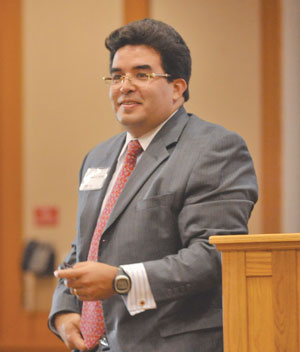For about 15 years, Mexico has had a class action procedure available in its consumer protection law. But only the federal consumer protection agency, PROFECO, could institute limited claims on consumers’ behalf.

“On the books, the old legislation looked like great consumer protection, but ultimately its efficacy depended on the money made available to implement it and the political will behind it,” says professor Manuel Gómez of Florida International University’s College of Law. “
As is often the case in Latin American countries with legislation of this kind, the support turned out to be quite thin.”
Consumer interest groups weren’t satisfied and persuaded various state legislatures to enact broader versions of their own class action legislation. Pressure then mounted on the federal government, which introduced and passed new class action legislation that was the subject of considerable controversy in the media and in congress before its enactment.
The law comes into effect on March 1, 2012, and on its face represents a much greater concern for the business community than its predecessors did.
While the law limits class actions to consumer, antitrust, and environmental claims, it also gives standing to “registered civil associations” that have existed for at least one year and to groups composed of at least 30 individuals acting as class representatives.
By way of ensuring competent representation, the legislation subjects civil associations and class representatives to certain standards that include rules on conflicts of interest and sanctions for filing frivolous claims and violations of professional conduct.
“Perhaps the most important deterrent is the prohibition imposed on plaintiffs to pursue collective litigation as a way to obtain profit, political benefit or in any manner inconsistent with antitrust litigation,” says Gómez.
Indeed, a breach of standards may result in the court removing the party representative and substituting the general attorney’s office as the representative.
The law also continues to give standing to PROFECO and other federal agencies with expertise in the subject matter of various class actions such as the federal environmental protection agency, the National Commission for the Protection and Defense of Financial Services Users, and the federal antitrust commission.
The law is unique because, unlike other Mexican procedural rules, courts acting under it may grant injunctive relief at any point in the proceedings, order the recall or seizure of goods and products threatening irreparable harm to the class, and take “any other step that the judge deems advisable” to protect class members.
The test for interim relief requires parties to demonstrate an urgent need based on the risk of damage that will be difficult to redress. The court must also balance the harm caused by the restraint against the benefit of imposing the requested relief.
Defendants may post security to avoid enforcement except where national security or an imminent threat of irreparable harm to the social interests, life or health of class members is at stake.
Courts can order restitution or damages.
Where individual members have the right to damages, the legislation establishes a two-stage procedure starting with a class-wide trial followed by individual proceedings where class members must prove their own damages as well as a causal link to the impugned conduct.
Individuals may seek to become class members for 18 months following the final judgment or settlement.
The government has also created a class action fund administered by the federal judiciary council. The fund’s resources will come from awards that cannot be distributed to class members. The fund can serve to promote class actions in Mexico and collective rights research and education.
It can also help cover the payment of expenses related to class actions, including the class representative’s fees.
As with class legislation elsewhere, however, the degree of the threat to business won’t crystallize until judges start interpreting the legislation.
“There is a common belief that, however interpreted, the legislation will have a significant impact on business,” says Salvador Fonseca-Gonzalez of Baker & McKenzie’s Mexico City office.
“While the principles governing certification, for example, are clearly stated in the legislation, and we expect there will be considerable similarity in interpretation to what has been seen in the United States, we also expect that there will be important differences.”
Needless to say, the legislation is attracting the attention of plaintiffs’ firms.
“The feeling in the legal community is that Mexican firms are preparing to team up with American firms and import their knowledge,” says Fonseca-Gonzalez.
In his view, the cap on fees in the legislation won’t be a deterrent.
“Fees are capped at 20 per cent of damages in smaller cases, and the maximum is reduced to 11 per cent as the recovery gets higher,” says Fonseca-Gonzalez.
“But these are still attractive percentages and a clear incentive for plaintiffs’ lawyers to target class actions as a very remunerative field.”
Gómez says the Mexican legislation is indicative of a general trend in Latin America.
“The tendency seems to be in favour of expanding the procedural protection for individual and collective rights through the establishment of different forms of collective litigation, including class actions.”
But Gómez describes the trend as a “timid” one with deficiencies relating to representation issues, certification requirements, opt-in and opt-out procedures, procedural safeguards, punitive and catastrophic damages, and litigation finance.
“Still, the trend shows that the policy debate about group litigation in Latin America has reached the necessary maturity level for the legal machinery to react and provide local protection against collective harms,” he notes.

 “On the books, the old legislation looked like great consumer protection, but ultimately its efficacy depended on the money made available to implement it and the political will behind it,” says professor Manuel Gómez of Florida International University’s College of Law. “
“On the books, the old legislation looked like great consumer protection, but ultimately its efficacy depended on the money made available to implement it and the political will behind it,” says professor Manuel Gómez of Florida International University’s College of Law. “